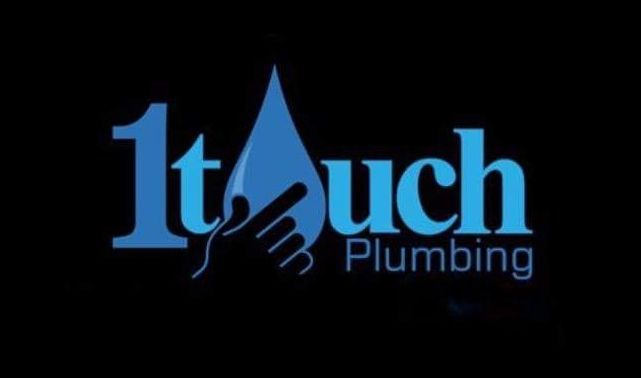6 Common Causes Of Backflow In Residential & Commercial Plumbing
Backflow is one of the most serious plumbing problems homeowners and business owners face. It occurs when water flows in the wrong direction within a plumbing system, potentially contaminating drinking water with hazardous substances. Backflow can introduce bacteria, chemicals, and other pollutants into the clean water supply, posing a significant health risk. In this blog post, we'll explore the most common causes of backflow and how professional plumbing services can help safeguard your water supply.
On this page:
- 1. Cross-Connections in Plumbing Systems
- 2. Back Pressure from Increased System Pressure
- 3. Back Siphonage Due to Negative Pressure
- 4. Faulty or Missing Backflow Prevention Devices
- 5. Underground Sewer or Drainage Contamination
- 6. Hot Water System Malfunctions
- Protect Your Water Supply with Professional Backflow Prevention in Townsville
1. Cross-Connections in Plumbing Systems
Cross-connections occur when a clean water line is inadvertently linked to a potential contaminant source. Without proper backflow prevention, this connection can allow pollutants to enter the drinking water supply.
Common Cross-Connection Risks:
- Garden hoses left in contaminated water – Submerging a garden hose in a bucket of chemicals or pool water can create a direct pathway for backflow.
- Dishwashers & washing machines – These appliances can syphon dirty water into the plumbing system if not fitted with air gaps.
- Irrigation systems – Without a backflow preventer, pesticides and fertilisers from garden sprinklers can enter the household water supply.
How to Prevent Cross-Connections:
- Install backflow prevention devices such as air gaps or vacuum breakers.
- Ensure garden hoses and external taps have a hose bib backflow preventer.
- Have a licensed plumber inspect and maintain backflow prevention systems.
2. Back Pressure from Increased System Pressure
Back pressure happens when the pressure in a plumbing system exceeds the pressure of the main water supply, forcing water to flow in reverse.
What Causes Back Pressure?
- Pumps in commercial buildings – High-powered water pumps can create excessive internal pressure.
- Thermal expansion from hot water systems – Heated water expands in a closed system, increasing pressure.
- Elevated water storage tanks – Gravity-fed systems sometimes generate higher pressure than the main supply.
Preventative Solutions:
- Install a pressure relief valve or an expansion tank on hot water systems.
- Regularly check water pressure levels to ensure they are within safe limits.
- Have routine inspections by a professional plumber to assess potential risks.
3. Back Siphonage Due to Negative Pressure
Back siphonage results from a sudden drop in water pressure, which creates a vacuum effect, pulling contaminated water into the system. This issue is often beyond a property owner's control and typically stems from disruptions in the main water supply.
Common Causes of Back Siphonage:
- Water main breaks – Damage to underground pipes can create suction that draws in pollutants.
- Fire hydrant use – A sudden pressure drop can pull water from nearby properties when hydrants are activated.
- Large-scale water use – High-demand events like firefighting or industrial water consumption can cause pressure fluctuations.
Preventative Measures:
- Install reduced pressure zone (RPZ) valves to prevent contamination.
- Use air gaps between water sources and fixtures.
- Schedule annual backflow prevention testing with a qualified Townsville plumber.
4. Faulty or Missing Backflow Prevention Devices
Many modern plumbing systems include backflow prevention devices, but when these fail—or are missing—contaminated water can easily enter clean water lines.
Signs of a Faulty Backflow Prevention Device:
- Discoloured or foul-smelling water coming from taps.
- Unusual drops in water pressure, which may indicate contamination.
- Leaks or corrosion around plumbing fixtures connected to backflow devices.
How to Maintain Backflow Prevention Devices:
- Schedule annual testing and maintenance by a licensed plumber.
- Replace worn or damaged backflow preventers as needed.
- Ensure commercial properties comply with local backflow regulations.
5. Underground Sewer or Drainage Contamination
Drainage and sewer systems are highly susceptible to backflow contamination, particularly during storms or blockages. When sewer water is forced backwards into plumbing systems, it poses severe health risks.
What Causes Drainage Backflow?
- Blocked drains causing wastewater to reverse into internal pipes.
- Heavy rainfall or flooding overwhelming stormwater and sewer systems.
- Sewer line failures leading to cross-contamination.
Prevention Strategies:
- Conduct regular drain inspections to detect potential blockages.
- Use drain relining to reinforce pipes and prevent sewer backflow.
- Ensure stormwater systems are adequately maintained and clear of debris.
6. Hot Water System Malfunctions
Electric hot water systems can contribute to backflow issues if they develop internal pressure imbalances or faulty relief valves. Expanding hot water may flow back into the main supply without proper maintenance, carrying contaminants.
Common Hot Water System Backflow Risks:
- Faulty pressure relief valves failing to regulate pressure.
- Sediment build-up leading to corrosion and leaks.
- Closed-loop systems that lack an expansion tank to handle excess pressure.
How to Prevent Hot Water Backflow Issues:
- Schedule regular servicing of electric hot water systems.
- Install expansion tanks where required.
- Replace old or malfunctioning valves to ensure proper pressure control.
Protect Your Water Supply with Professional Backflow Prevention in Townsville
Backflow is not just a plumbing issue—it’s a serious health and safety concern. Whether in a residential home or a commercial building, unprotected plumbing systems are at risk of contamination, leading to significant health hazards and property damage.
At 1touch Plumbing, we understand the importance of maintaining a safe and uncontaminated water supply in residential and commercial settings. Our comprehensive plumbing services are designed to prevent backflow and address related issues effectively. Don't wait for a backflow issue to compromise your water quality. Contact us today to schedule a comprehensive plumbing assessment.










